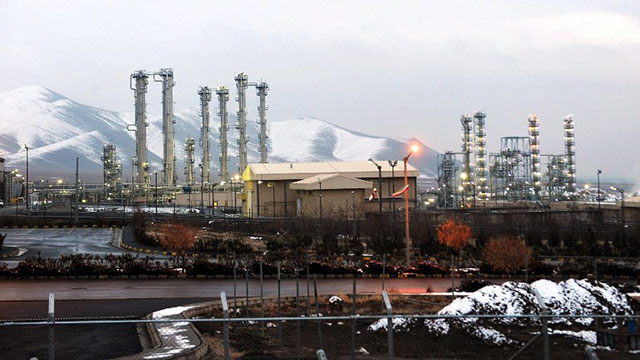SUMMARY
This is AI generated summarization, which may have errors. For context, always refer to the full article.

TEHRAN, Iran – UN nuclear experts inspected Iran’s Arak heavy water plant on Sunday for the first time since summer 2011, amid international concern that the half-built site may have a military purpose.
The one-day inspection of the site 240 kilometers (150 miles) southwest of Tehran was carried out by two experts, led by the head of the International Atomic Energy Agency’s Iran task force, Massimo Aparo, but no details were immediately available.
The visit forms part of a mid-November agreement in Tehran that also allows the IAEA access to another nuclear-related site, as the Vienna-based agency seeks to clarify concerns about Iran’s past nuclear activities.
The two IAEA inspectors arrived on Saturday and went straight into talks with Iranian nuclear officials.
After the meeting, Iran’s Atomic Energy Organization spokesman Behrouz Kamalvandi said Tehran had provided IAEA with “required information on ongoing research” about its new generation of centrifuges that enrich uranium by spinning it at supersonic speed.
Iran’s nuclear work has for years been at the heart of disputes between Tehran and world powers, which suspect it of masking military objectives despite repeated denials.
A small heavy water research reactor at the Arak site is of concern because Tehran could theoretically extract weapons-grade plutonium from its spent fuel if it also builds a reprocessing facility.
The reactor has been plagued by a series of delays, however, and its stated completion date of 2014 is expected to slip back even further.
But a year after it eventually comes on line, it could provide Iran with an alternative to highly enriched uranium for use in a nuclear bomb.
Tehran insists its activities are entirely peaceful and says the Arak reactor would create isotopes for medical and agricultural use.
The IAEA does not have a permanent presence in Iran, but it regularly checks work on the Arak reactor, while also pushing Tehran to disclose any new design detail on the reactor since 2006.
Shashank Joshi, a research fellow at the London-based Royal United Services Institute, said that while the IAEA inspection of the heavy water plant – a first since August 2011 – was a “positive step,” it was not a major development.
The plant “is not at the crux of Western concerns about Arak. In fact, inspections in general are not the central issue at Arak – the issue is over whether it will be activated or not, and how soon,” he told Agence France-Presse.
Talks on deal implementation
Sunday’s inspection comes just weeks after Iran clinched a landmark deal with world powers under which it will freeze or curb some of its nuclear activities in return for limited relief from crippling international sanctions. (READ: Iran nuclear freeze to start by January: envoy)
The interim six-month accord struck in Geneva on November 24 aims to build trust and buy time for diplomacy to solve the decade-long standoff over Iran’s nuclear work.
Quoted by the ISNA news agency, senior Iranian negotiator Abbas Araqchi said Tehran and the so-called P5+1 group – the United States, Britain, France, China and Russia plus Germany – are to start discussions on implementation of the deal in Vienna.
The two-day meeting at the level of experts begins on Monday, with several such gatherings to follow in coming months “so that the Geneva deal can hopefully achieve its objectives,” Araqchi added. (READ: Iran deal wins praise, but next steps tougher)
The Arak reactor has been one of several sticking points, with UN Security Council resolutions calling on Iran to suspend work there.
Based on the agreement in Geneva, Iran is obliged to “not commission the reactor or transfer fuel or heavy water to the reactor site” or instal remaining components at the unfinished facility.
It should also increase cooperation with the IAEA, under the “roadmap” agreement signed last month after years of unsuccessful negotiations.
The IAEA will now also have access to the Gachin uranium mine, near the Strait of Hormuz in the southern Gulf.
Kamalvandi said Sunday an IAEA visit to Gachin could be discussed next week.
“Details have not been discussed, but it is highly likely that the framework and a timeline for a visit to Gachin will be discussed in the talks in Vienna on Wednesday,” he told ISNA.
Another site causing international concern is the Parchin military facility where the IAEA suspects Iran may have experimented with atomic weapons development.
Tehran has so far denied the agency access to Parchin, saying its military nature puts it off-limits. – Rappler.com
Add a comment
How does this make you feel?
There are no comments yet. Add your comment to start the conversation.